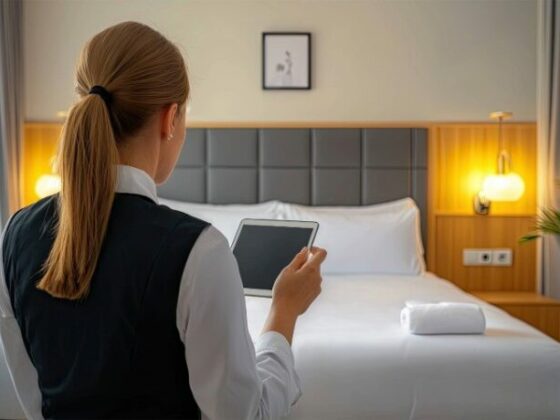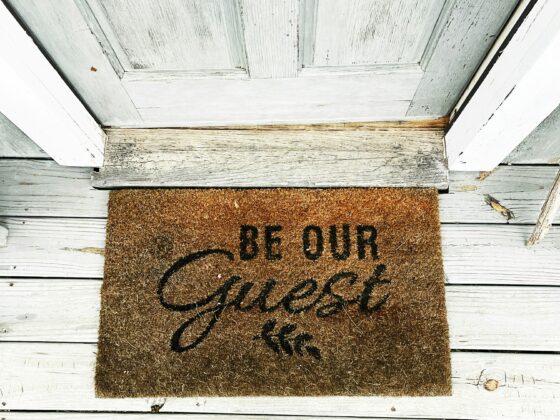From Concept Deck to Daily Reality
There’s a special kind of silence that follows a branding workshop.
The agency has just presented a beautiful deck: “Urban sanctuary for the modern traveller.” Everyone nods. Someone says, “Love the mood.” The owner asks about ADR. Nobody asks the one question that really matters:
“Can we actually deliver this every day at 3pm on a rainy Tuesday in November?”
I’ve seen hotels with a “luxury wellness” positioning and a spa the size of a generous bathroom. I’ve also seen modest, three-star boxes that quietly outperformed everyone because their DNA was simple, honest and operationally tight.
Part 3 is about that: turning brand poetry into something your front desk, housekeeping and kitchen can execute without needing a miracle or an extra 20 FTE.
1) Start with the business model, not the mood board
Before we talk about candles, colours and playlists, we need to know who pays the bills and how.
Three basic questions:
1.Who are we really serving?
- Weekday: corporate, project crews, events, government?
- Weekend: leisure couples, families, weddings, local staycations?
- Geography: local, domestic, international?
2. What’s the revenue engine?
- Pure rooms?
- Rooms + strong F&B?
- Meetings & events heavy?
- Spa/golf/ancillaries as genuine drivers, or just decoration?
3. What is “good” ADR/RevPAR/GOP for this location and segment? Not Pinterest. Not Dubai. This market.
- Not Pinterest. Not Dubai. This market.
A simple tool I like:
Guest & Revenue Snapshot (one slide)
- 3–5 primary guest archetypes
e.g. “Weekday Warrior”, “Conference Delegate”, “Anniversary Couple”
Reason to visit, Price tolerance, What they absolutely care about, What they don’t care about (very important)
- Revenue mix target:
Rooms X% | F&B Y% | M&E Z% | Other %
If this slide isn’t clear, everything that follows is guesswork.
2) Define the promise: one sentence, three proof points
A hotel DNA that works can be summarised in one sentence plus three proof points.
“A calm, efficient base for people who travel to work, not to pose.”
Proof points:
- Sleep: quiet rooms, blackout, strong shower, real desk.
- Speed: efficient check-in/out, reliable Wi-Fi, quick breakfast.
- Support: 24/7 light F&B, a helpful team that actually knows the area.
Field note: The more complicated the promise, the more complicated the operations.
Exercise I always do in a pre-opening room:
- Ask each stakeholder (owner, brand, GM, architect, designer) to write their one-sentence promise on a Post-it.
- If they don’t sound like variants of the same idea, you’re designing five different hotels in one building.
3) Service blueprint: draw the day in a guest’s life
Once we know who and what we promise, we design how it actually happens.
A service blueprint is basically:
- Frontstage: what the guest sees.
- Backstage: what the team does so that frontstage looks effortless.
Key journeys to map (keep it simple, but real):
- Arrival & first impression
- Check-in & first time in room
- Breakfast / main F&B experience
- Problem handling (Wi-Fi fails, noise, billing, etc.)
- Departure & post-stay
For each step, list:
- Touchpoints (emails, app, signage, people, spaces)
- What “good” looks like (simple, observable behaviours)
- Supporting systems (PMS, POS, housekeeping, engineering)
- Likely failure points
Then you highlight 3–5 “moments that matter”. Those are the ones you actually invest in. Everything else just needs to be competent.
Aside: If every touchpoint is ‘premium’, none of them is. You just get a very expensive hotel that feels strangely generic.
4) Design for delivery: standards teams can execute
This is the part where we gently separate design fantasy from payroll reality.
A few brutal but useful filters:
Staffing reality check
- Can we deliver this standard with the headcount we can afford in the low season?
- If it only works at 90%+ occupancy and full staffing, it doesn’t work.
Complexity test
- How many steps does this standard add to a shift?
- How many departments does it involve?
- Can we explain it in 2–3 sentences to a new team member?
Failure impact
- If we do this at 50% quality, does it damage the brand or just mildly irritate?
- If it’s high risk when done badly, either simplify or don’t do it.
I once saw a 12-step coffee ritual in a hotel that could afford… one barista per shift. It looked fantastic in training. It died on day three when the queue reached the lobby doors.
Rule of thumb:
“If the standard needs a TED Talk to explain, it won’t survive a Monday breakfast.”
5) Design-to-Cost: champagne feelings, prosecco budget
Great DNA is not “spend less”. It’s spend intentionally.
I like using a simple Invest / Maintain / Save matrix across the journey:
Instead of cutting everything by 10%, you decide where you want the guest to really feel the brand, and where you simply deliver clean, efficient and unremarkable.
Field note: The guests will forgive a basic corridor. They won’t forgive a noisy room.
6) Avoiding the Instagram Trap
This is a personal favourite.
There’s a temptation to design hotels for photos, not for people. Curved furniture, impossible-to-clean surfaces, open bathrooms that look amazing until someone actually wants privacy.
Ask three questions before approving any “wow” moment:
- Can it be cleaned easily every day?
- Does it age well when occupancy is high and the maintenance budget is tight?
- Does it help deliver the promise, or just the photographer’s portfolio?
If the answer is “it will look great on Instagram,” I immediately ask, “…and at 07:30 when a business guest is late for a meeting?”
7) Tools you can use tomorrow
To make this practical, you can literally walk into your next pre-opening or repositioning meeting with these four slides:
- Guest & Revenue Snapshot: 3–5 archetypes, revenue mix, basic KPIs.
- Brand Promise & Proof Points: One sentence, three things we must consistently deliver.
- Service Blueprint (high level): Key journeys, moments that matter, obvious failure points.
- Invest / Maintain / Save Matrix: Where money and attention go, and where they don’t.
If those four are solid, the rest – SOPs, training, checklists – suddenly have a spine.
8) How does this connect to the rest of the series
- Part 1 – Alignment made sure everyone is talking about the same project.
- Part 2 – Timeline gave the pre-opening a structure and a critical path.
- Part 3 – DNA (this one) ensures we’re not just opening a building, but a hotel with a clear, deliverable promise.
Next up in the series:
Part 4 – People Before Paint: Building a Launch-Ready Team & Culture How you hire, brief and train the first wave of people who will live this DNA every day.
Because a hotel concept is only as strong as the people who have to explain it to a tired guest at 11 pm.






